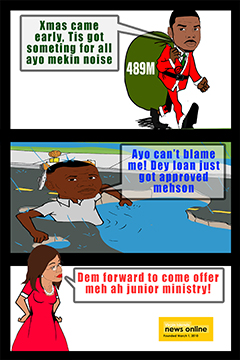Iran’s currency plummets amid prospect of Trump presidency

Iran's currency, the rial, plunged to an unprecedented low on Wednesday, trading at 703,000 to the dollar, as former President Donald Trump appeared poised to secure another term.
The development spells new economic challenges for Tehran, already under strain from escalating regional conflicts and harsh international sanctions. Iran's Central Bank may intervene by injecting more foreign currency to stabilize the rial, as it has done previously.
The rial's slide is a stark contrast to its strength during the 2015 nuclear deal when it traded at 32,000 to $1. Following years of U.S. sanctions and economic setbacks, the currency's decline underscores Iran's ongoing financial struggles, which have worsened since Trump's 2018 exit from the nuclear accord.
ECONOMIC HURDLES DEEPEN
President Masoud Pezeshkian, who took office after the untimely death of his predecessor, hard-liner Ebrahim Raisi, has prioritized easing Western sanctions as a key policy goal. Sworn in on July 30, Pezeshkian inherited an economy under siege, with the rial at 584,000 to $1.
His administration's attempts to stabilize the economy have faced significant obstacles, largely due to sanctions related to Iran's nuclear program, which continues to enrich uranium near weapons-grade levels. The Iranian government has downplayed the implications of the U.S. presidential election for its policy.
"The election of the U.S. president doesn't have anything specifically to do with us," said government spokeswoman Fatemeh Mohajerani, asserting that Iran's primary policies remain consistent regardless of the American administration in power.
ENDURING TENSIONS WITH THE UNITED STATES
U.S.-Iran relations remain deeply strained decades after the 1979 embassy takeover in Tehran and the subsequent 444-day hostage crisis.
Trump's 2018 exit from the nuclear agreement amplified hostilities, and the economic isolation imposed on Iran has intensified. Despite Pezeshkian's efforts, progress on lifting sanctions has been limited, while rising inflation and currency devaluation continue to affect everyday Iranians.
The Iranian administration's stance is that "the major policies of America and the Islamic Republic are fixed," and Tehran has made "necessary preparations in advance" for a Trump presidency. However, the rial's rapid depreciation indicates an underlying unease within Iran's economy, with many citizens feeling the affect of political shifts in Washington.
IRAN'S ROLE IN REGIONAL CONFLICTS
Amid economic turmoil, Iran remains entrenched in the Middle East's volatile conflicts, lending support to groups within its "Axis of Resistance," including Hamas in Palestine, Hezbollah in Lebanon, and Houthi rebels in Yemen. As Israel's conflict with Hamas intensifies in Gaza, Iran's regional allies face growing pressure. Tensions escalated after Israeli strikes on Iranian targets on Oct. 26, in retaliation for Iranian missile launches.
Iran has threatened to respond to Israel, where U.S. forces now man a missile defense system, further raising the stakes. With Trump likely to assume the U.S. presidency, Iran faces renewed challenges on both economic and geopolitical fronts, testing Pezeshkian's leadership amid uncertain times.









.png)





























1 Response to “Iran’s currency plummets amid prospect of Trump presidency”